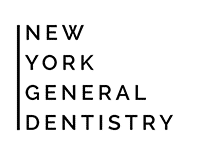In the past year, I have embarked on an amazing journey to expand my dental knowledge in the direction of preventive and educational dentistry. Two years ago, I left my part-time position in academics to focus on private practice. But I missed the teaching aspect of my career and so decided to dive in to Spear Education. I have subsequently been doing online work for the past year and have gone to Arizona to their facility to train twice.
Sleep apnea prevention with airway prosthodontics
The most fascinating part of this experience is their new focus on airway prosthodontics. This is not to be mistaken with sleep apnea dentistry. Sleep apnea dentistry is the final result of a problem that the Spear Education system says can be predicted and even prevented with early intervention.
Evaluating (and improving) how you breathe
Airway prosthodontics is the evaluation and treatment of the breathing systems of an individual which may cause a multitude of problems including:
- Bruxism (tooth grinding)
- Poor sleep quality
- Sleep apnea
- Irritability
- Cardiovascular problem
Don’t ignore tooth grinding and clenching
In my practice, as many as 80% of my adult patients grind or clench their teeth. Research shows that 50% of these individuals are likely to have airway issues. This number jumps to almost 100% in children under the age of 12.
Traditional treatments

The traditional approach to treatment is to make a night guard for adults and wait for children to “outgrow” this problem.
Recent airway theories maintain that the para-function of the jaw is to help the body get more air. With the traditional approach, the problem is already there and we are merely putting a bandage on it and not curing it.
In the realm of sleep apnea, the treatment involves appliances which move the lower jaw forward to open the airway, or CPAP appliances which push air into the airway with a mask worn during sleep. Unfortunately, research shows most patients are noncompliant with these forms of treatment due to discomfort. The average time spent wearing them is about 1-3 years.
Is there a better way?
These facts were very disheartening for me and I was eager to see if there was a better way to treat and identify these problems. At Spear Education, I began to learn how to identify people with potential problems.
The premise of what I learned was that a dentist can be the first person to identify possible airway issues. I started to ask people with bruxism and clenching about their sleep and if they had any issues breathing. I also started to look for people with septal issues in the nose and scalloped tongues which appeared big in the mouth and placed more emphasis on the alignment of people’s teeth.
Here’s what I found…
With this newfound information, I discovered a lot of people have some kind of issue involving their breathing and have never been approached by their healthcare provider — let alone a dentist.
I felt like I opened a door to helping people not only with their teeth but also with their systemic health.
The Seattle Protocol: Prevention, Treatment & Resolution
The Spear philosophy uses a format they have called the Seattle Protocol. It is a 6-step program that focuses on prevention, treatment, and resolution of the problem. The most interesting part of the protocol is the first step of nasal breathing training. Some people have a hard time breathing from their noses and can be trained in as little as 14 days to breath through their noses.
I have subsequently tried this method based on the Buteyko breathing clinic manual with great results. Watch the video below to learn more:
[et_pb_video src=”https://youtu.be/ClQqi87UAoQ” image_src=”//i.ytimg.com/vi/ClQqi87UAoQ/hqdefault.jpg”
The remaining 5 steps of the protocol have to do with appliance therapy of different forms, which act to open airways. Once a patient is comfortable and breathing better, a resolution step to get them out of an appliance is formulated using a multi-disciplinary model. The resolution step involves multiple disciplines, such as otolaryngologists, orthodontists, and oral surgeons.
The key is that a patient will be given the steps to final resolution and not be forced to live with “bandages” forever.
Continuing my journey and helping my patients

I am still learning more about the role I can play in airway health, but this new addition to my dental knowledge has added a layer to my profession that can really impact people‘s systemic health. This is very rewarding!
By the time most people are diagnosed with sleep apnea, they often have several other problems including cardiovascular disease, diabetes, depression, anxiety, and oral issues such as bruxism.
I look forward to educating patients both young and old about not only their oral health but the signs of possible long-term problems related to their breathing.
If you’d like to learn more about your airway health, schedule your appointment at New York General Dentistry today.
For over 20 years, Inna Chern, DDS has been offering personalized, high-tech dental care to Manhattan and NYC residents. With a focus on individualized attention and the latest technology, her modern Midtown East office aims to reshape dental care perceptions in New York by prioritizing patient well-being and innovative services.



